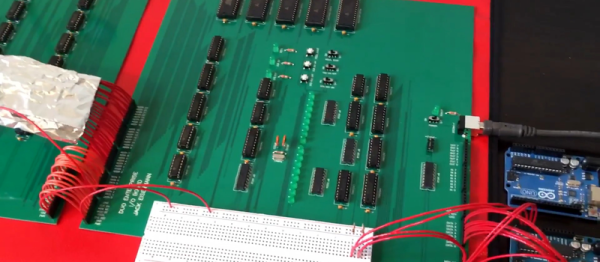The 8-bit home computers of yore that we all know and love, without exception as far as we are aware, had an off the shelf microprocessor at heart. In 1983 you were either in the Z80 camp or the 6502 camp, with only a relatively few outliers using processors with other architectures.
But what if you could have both at once, without resorting to a machine such as the Commodore 128 with both on board? How about a machine with retargetable microcode? No, not the DEC Alpha, but the Isetta from [RoelH]— a novel and extremely clever machine based upon 74-series logic, than can not only be a 6502 or a Z80, but can also run both ZX Spectrum games, and Apple 1 BASIC. We would have done anything to own one of these back in 1983.
If retargetable microcode is new to you, imagine the instruction set of a microprocessor. If you take a look at the die you’ll find what is in effect a ROM on board, a look-up table defining what each instruction does. A machine with said capability can change this ROM, and not merely emulate a different instruction set, but be that instruction set. This is the Isetta’s trick, it’s not a machine with a novel RISC architecture like the Gigatron, but a fairy conventional one for the day with the ability to select different microcode ROMs.
It’s a beautifully designed circuit if you’re a lover of 74 logic, and it’s implemented in all surface mount on a surprisingly compact PCB. The interfaces are relatively modern too, with VGA and a PS/2 keyboard. The write-up is comprehensive and easy to understand, and we certainly enjoyed digging through it to understand this remarkable machine. We were lucky enough to see an Isetta prototype in the flesh over the summer, and we really hope he thinks about making a product from it, we know a lot of you would be interested.













